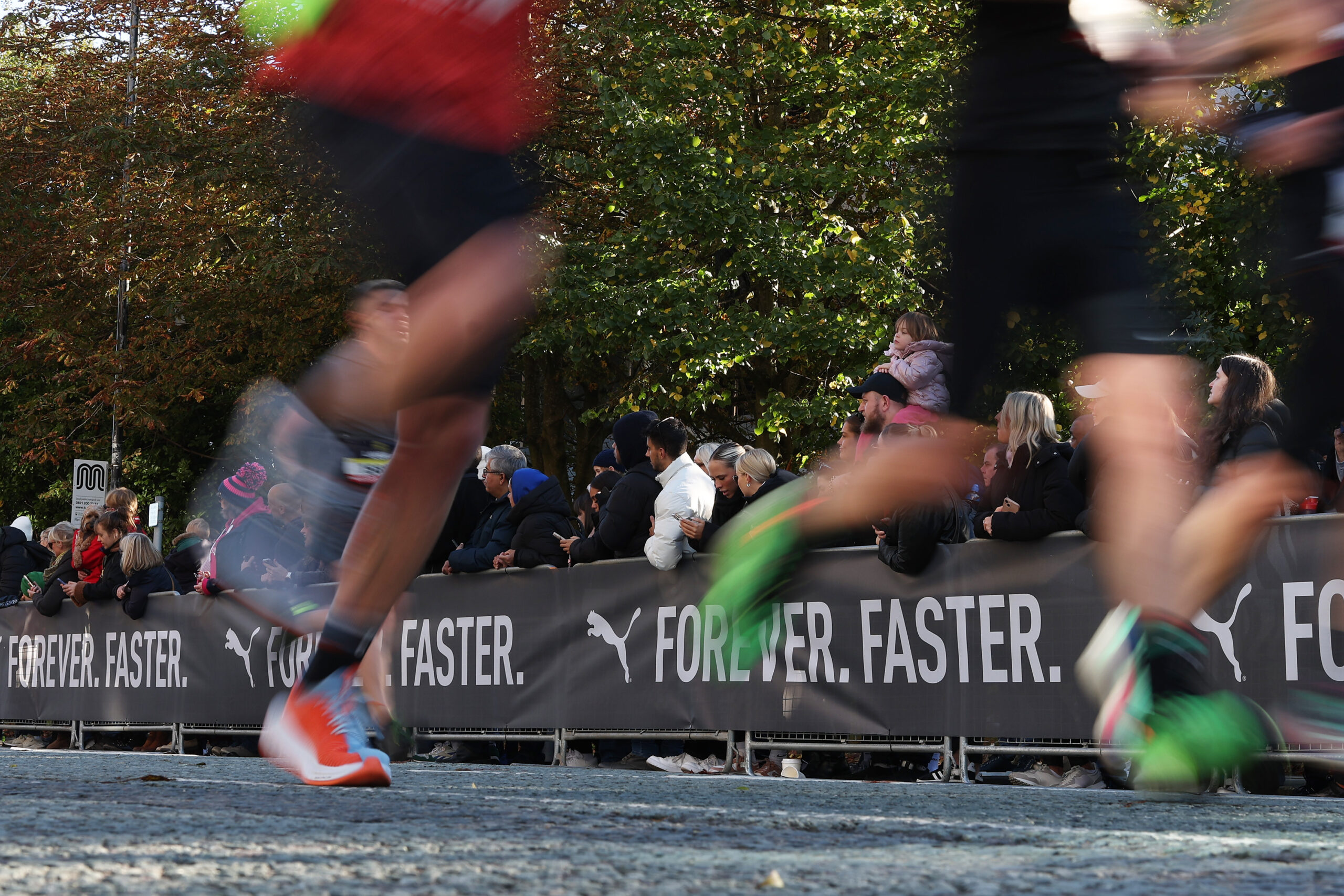5 RUNNING SHOE MYTHS AND HOW TO CHOOSE THE RIGHT PAIR
Choosing the right pair of running shoes can be daunting and confusing when common myths come into play. After all, not every shoe suits every foot. You can quickly feel a bit like Cinderella: How do I find the right running shoe? Which one fits my foot? How should it fit?

PUMA became the Official Sportswear Partner at the Manchester Half in 2023.
We spoke to PUMA to discuss 5 common myths about running shoes and give you the tools to choose the right pair for you.
MYTH 1: EXPENSIVE SHOES ARE THE BEST
Are the most expensive running shoes better?
PUMA SAID: “It is worth investing in the right equipment but this doesn’t have to cost a fortune. The life expectancy of a shoe depends on the material used, its quality and workmanship. If you run regularly, it is worth investing in high-quality running shoes rather than replacing a poor quality pair frequently. Of course, this will also better protect your feet from overload”.
MYTH 2: YOU SHOULD REPLACE YOUR SHOES EVERY 300-500 MILES
How often should you replace your running shoes?
PUMA SAID: “There is, unfortunately, no definitive answer to how long running shoes can be worn. No matter how old your shoe is and how often you run in them, always pay attention to their condition, because the outsole provides a visual indication of wear. Turn the shoe over and take a look; if the sole shows clear signs of wear, it is time for new running shoes. If in doubt, it is better to replace your running shoes sooner to not limit your training success”.
MYTH 3: MINIMALIST SHOES ARE BETTER FOR YOUR FEET
Are minimal running shoes better for my feet?
PUMA SAID: “This one completely comes down to personal preference. Minimalist shoes can have the benefits of working different muscles in the legs and feet which are being neglected. However, super stacked cushioned shoes/full carbon plated shoes are more comfortable for other runners”.

Can Super Shoes really make you faster? Perhaps, say PUMA, but they may not suit everyone…
MYTH 4: ‘SUPER SHOES’ ARE A WASTE OF MONEY
Will carbon plated shoes make me faster?
PUMA SAID: “Again, this varies from person to person; super shoes can give you benefits of higher running economy through their technology – in other words, using less energy to sustain a certain speed. They are also designed to return energy with each foot strike and can delay the early onset of fatigue in the legs. However, depending on a person’s biomechanics (the way we move as individuals depending on how our muscles and other structures work) not everyone may benefit from these technologies”.

Find your perfect pair of running shoes with the PUMA Shoe Guide (below)
MYTH 5: THERE IS ONE ‘SUPERIOR’ RUNNING SHOE
Which running shoe is the best?
PUMA SAID: “While it’s tempting to assume that there is one superior shoe and that a higher price tag is always ‘better’, this is not always the case. Finding your shoe is personal to you. To find your true running shoe match, there are more considerations to make, such as individual foot characteristics, running styles, training goals and personal comfort needs”.
All in all, choosing the right running shoe for you is complex, but it doesn’t have to be difficult. PUMA have created a simple guide to help you find the right shoe for you.

